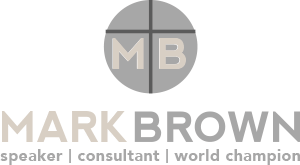You’ve just NAILED your presentation, and to add value, you decide to include…questions-and-answers. Yes…the infamous Q & A SESSION! For many speakers, the Q & A has become the standard way to conclude their program, but that leads, interestingly enough, to a few QUESTIONS, four of which I’ll answer here…in a Q & A format.
Q: I should conduct Q & A after my presentation, right?
A: Absolutely…NOT!
There are a couple of reasons for this.
First, when attendees hear that your program is essentially over, many begin to mentally ‘check out’, reaching for their mobile devices, purses and other personal effects as they head out the door. On a virtual platform, you’re likely to see the number of participants rapidly reducing before your eyes. As far as many are concerned, they have received all the value they will get from your session. You must give them a reason to stay.
Second, you put yourself at the mercy of a final question that could be antagonistic, or one for which you have no clear, confident response. The last thing you need is for your audience to leave remembering that you did NOT have answers. Let your audience know that you have one final thought, point, or idea, and that before you offer it, you will take a few SHORT, SPECIFIC questions.
Q: What’s the best way to conduct the Q & A in a virtual meeting?
A: There are a few options, depending on the meeting format and audience size.
It’s a good idea to confirm for your audience how much time has been allocated for the Q & A session, regardless of your meeting format. For simplicity, I’ll focus on the Zoom platform, which uses WEBINAR and MEETING formats.
In WEBINAR format, you can use CHAT, since you cannot see the attendees. I recommend having a co-panelist as a CURATOR to receive, sort, condense, edit, and select the questions that you will answer. Ask the attendees to send all their questions to the CURATOR ONLY, which they may choose to do DURING your presentation.
In MEETING format you can use CHAT in the same way, especially with a large audience. If your audience is small, say 25 or fewer, you may choose to engage them in conversation by having them raise hands on screen or using REACTIONS. You can identify individuals by name, instruct them to turn their microphones and cameras on, and respond directly. That’s your choice.
In either case, let the audience know when you will respond to TWO FINAL questions. In a smaller MEETING, you can identify the individuals from whom you will accept those questions. For example:
“We have time for two more questions. Deepak, I’ll take yours first, then Katia’s.”
Reinforce this after Deepak’s question with a statement like,
“Katia, you have the final question. Please go ahead.”
In this way, YOU maintain control of the Q & A session, and you will ensure that it runs smoothly.
Q: What if I don’t get any questions?
A: Here’s one simple option.
PRIME THE PUMP. You can pose the first question by saying something like, “Wherever I go, the one question that I’m always asked is…” Then answer that question. It’s very likely that someone in your audience will have WANTED to ask that question, but didn’t want to speak up. By answering the first question, you ‘open the door’ for audience members to engage.
Q: Do I close the Q & A with a THANK YOU slide?
A: Only if you want an anticlimactic conclusion.
I confess. The ‘THANK YOU’ slide is a pet peeve of mine. Do you REALLY need a SLIDE to thank your audience? Is that REALLY the LAST thing you want them to remember?
Look at the end of my first answer above. Let your audience know that you have one final thought, point, or idea to share AFTER the Q & A. Conclude with YOUR words of wisdom. Your final nugget of advice should be the exclamation point at the end of their experience with you. As my mentor, Hall Of Fame speaker and coach Patricia Fripp says, “Last words linger.” Let your words linger in their minds, and prompt them to act.
You have the answers we need. Provide them by CONDUCTING A QUALITY Q & A!
DREAM BIG; WORK BIGGER!

